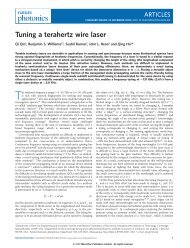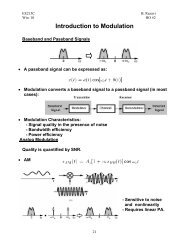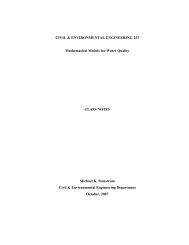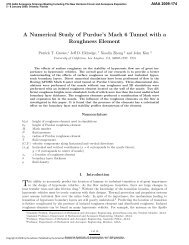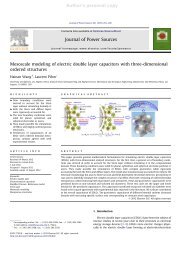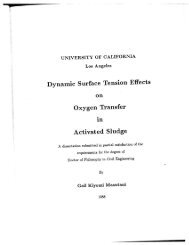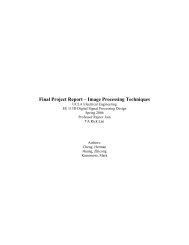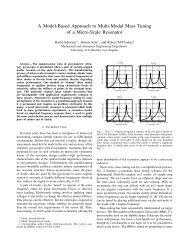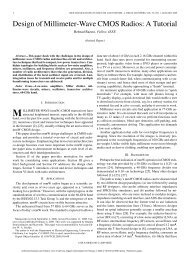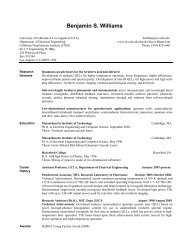Nuclear norm system identification with missing inputs and outputs
Nuclear norm system identification with missing inputs and outputs
Nuclear norm system identification with missing inputs and outputs
Create successful ePaper yourself
Turn your PDF publications into a flip-book with our unique Google optimized e-Paper software.
Table 3: Ten benchmark problems from the Daisy collection [14]. N I is the number of data points used for<strong>identification</strong>. N V is the number of points used for validation.Data set Description Inputs Outputs N I N V1 96-007 CD player arm 2 2 500 15002 98-002 Continuous stirring tank reactor 1 2 500 15003 96-006 Hair dryer 1 1 300 7004 97-002 Steam heat exchanger 1 1 1000 30005 99-001 SISO heating <strong>system</strong> 1 1 300 5006 96-009 Flexible robot arm 1 1 300 7007 96-011 Heat flow density 2 1 500 10008 97-003 Industrial winding process 5 2 500 15009 96-002 Glass furnace 3 6 250 75010 96-016 Industrial dryer 3 3 300 500significantly better fit.Examples from the DaISy collection. The second set of results are ten benchmark examplesfrom the DaISy collection [14]. Table 3 provides a brief description of the data sets. Sincethere is only one input-output sequence for each <strong>system</strong>, we break up the data sequences intwo sections. The first N I data points are used in the model <strong>identification</strong>, <strong>and</strong> the next N Vdata points are used for validation.Table 4 summarizes the performance measure (validation fit). We note that the nuclear<strong>norm</strong> solutions are significantly better than the baseline n4sid solution in examples 1, 4,<strong>and</strong> 10. For the other data sets the two solutions are comparable. The times reported in thelast column are the total time (in seconds) for computing the nuclear <strong>norm</strong> solution. Thisincludes the cost of solving (14) for 20 different values of the regularization parameter λ.5.2. Missing <strong>inputs</strong> <strong>and</strong> <strong>outputs</strong>In this set of experiments we evaluate the nuclear <strong>norm</strong> approach for problems <strong>with</strong><strong>missing</strong><strong>inputs</strong><strong>and</strong><strong>outputs</strong>. WereusethetenbenchmarkexamplesfromtheDaISydatabase,but remove a percentage of r<strong>and</strong>omly chosen <strong>inputs</strong> <strong>and</strong> <strong>outputs</strong> from the <strong>identification</strong>sequence.We solve the regularized nuclear <strong>norm</strong> optimization problem (18). In each experimentwe use r = s = 30 if the <strong>system</strong> is single-output <strong>and</strong> r = s = 15 otherwise. From theoptimal input <strong>and</strong> output sequences u <strong>and</strong> y we reorder the rows of (17) to obtain theleft h<strong>and</strong> side of (8), from which we obtain an estimate of range(O r ) via (11) <strong>with</strong> weightmatrices W 1 = W 2 = I. We then compute a <strong>system</strong> realization by the algorithm describedin section 2.2. Twenty optimization problems are solved <strong>with</strong> values of the regularizationparameter λ logarithmically spaced in the interval 10 −3 to 10 3 . The model <strong>with</strong> the bestvalidation fit is selected.16



